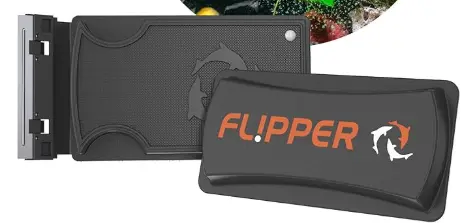Wanna clean unsightly green buildup or brown films (algae) on the tank walls? It’s tiresome and requires a lot of hard work to reach all areas of the tank, especially deep and awkwardly shaped sections.
A magnetic aquarium cleaner is the perfect solution to resolve this issue. They are more efficient than traditional scrubbing, and save both time and effort.
But weak magnets can detach easily and fall into the substrate. Some of them are not designed for thicker glass. If you are using sand, particles may get attached to the magnet and it’s a hassle to remove the magnet. So, it’s better to get one that floats!
Here, I’ll share how magnetic cleaners work, what to look for when buying one, and which ones actually deliver sparkling results. Let’s start!
Table of Contents
How Magnetic Aquarium Cleaners Work
Magnetic Aquarium Cleaners work on the principle of magnetism. It consists of two parts, each with strong magnets, and a strong magnetic force holds them together.
You can place them on either side of the glass (one inside and the other outside the aquarium). Moving the outer part of the magnetic cleaner causes the inner part to move simultaneously, and clean both sides of the aquarium.
I think the cleaners work well if they are moved in a circular motion. When you are done cleaning, simply remove the outer part, and the inner piece of the magnetic cleaner will float inside the tank.
They don’t disturb your aquarium’s ecosystem and can easily remove algae or dirt from tank walls. You no longer worry about wet arms or hands.
Which Magnetic Cleaner to Use?
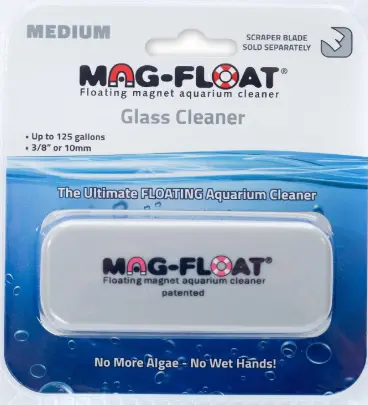
- Magnet Strength: Strong
- Max. Tank Thickness: 3/16 inch to ¾ (varies with size)
- Tank Material: Suitable for glass and acrylic.
- Cleaning Surface: Pads
- Floatability: Yes, floatable
- Key Features: High-quality magnets (neodymium), non-toxic, multiple sizes
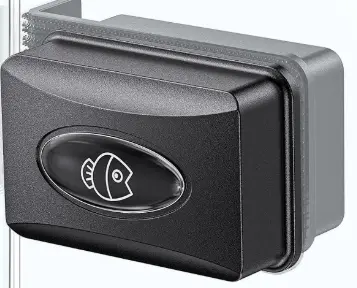
- Magnet Strength: Average
- Max. Tank Thickness: Less than ⅕ inch
- Tank Material: Good for glass tank.
- Cleaning Surface: Coarse and soft pads
- Floatability: None
- Key Features: Double-sided cleaning, small size
1. Pawfly Aquarium Magnetic Brush
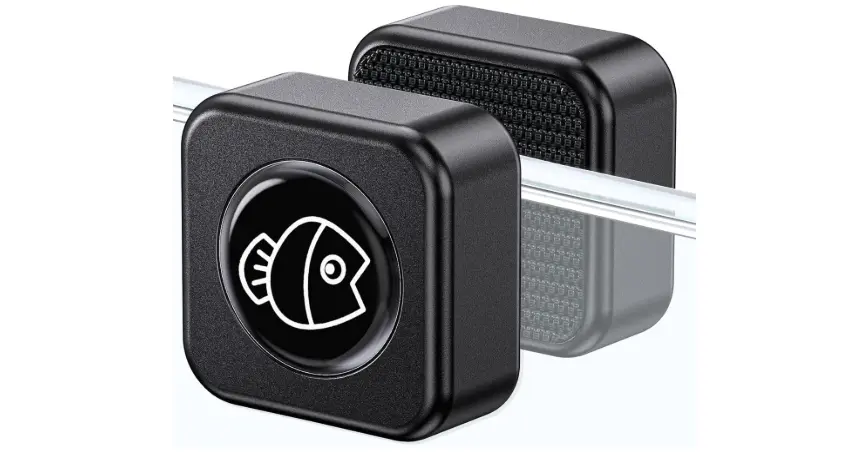
I bought the Pawfly Aquarium Magnetic Brush first because it was cheap compared to other cleaners. It works perfectly fine for 5-10 gallons, but it is tiny in size for my 22-gallon tank.
What I especially appreciate is that it has coarse pads that scrub the algae nicely if I move it over the same area a couple of times. It also removes hard stains on the tank wall.
But I have noticed that the magnets are not strong enough. They keep falling in the tank because they lose their grip, and they’re not floating too which was a hassle. I use fine sand as a substrate, and it also caused a few scratches on the tank glass. Then I switched to a Mag Float Glass Algae scraper.
- Low price point (inexpensive)
- Removes algae well if it is scrubbed slowly in the same area multiple times.
- Not floatable.
- Not good for acrylic, round, and curved tanks.
- Often detaches randomly.
2. Mag Float Glass Algae Scraper

I switched to Mag Float after facing issues with the previous cleaner, and it’s worth the money. It comes in multiple sizes and is suitable for any tank size and thickness. The magnets are high-quality and strong, and do not lose magnetic strength over time.
It works perfectly fine for medium to heavy algae growth on the tank wall. Even if the two magnets separate by chance, the inner part floats, making it easy to retrieve. I like its curved design, which is best for cleaning the corners of the aquarium.
- It floats, making it easy to retrieve if it falls into the tank.
- Prevents substrate contamination.
- Value for the price.
- Less suitable for hard algae.
- A bit expensive but worth the money.
3. Flipper Magnetic Aquarium Glass Cleaner
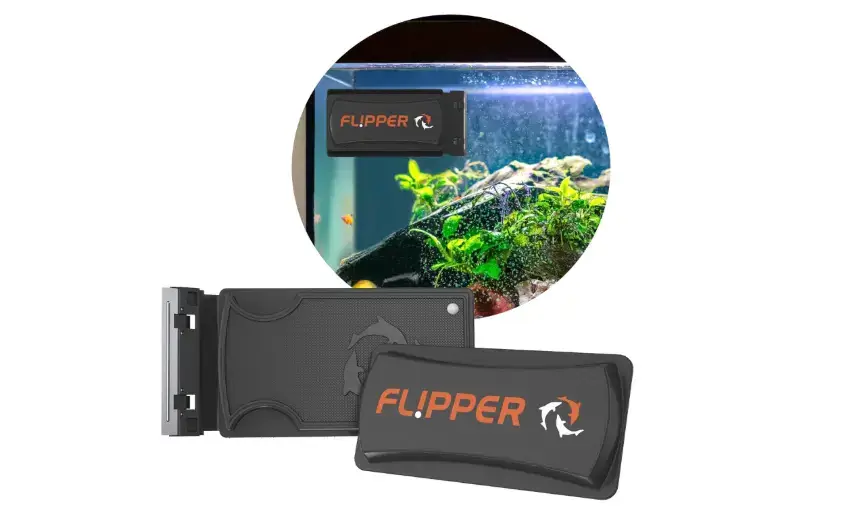
Another popular option is the Flipper aquarium glass cleaner. It cleans the tank glass within two to three swipes using the blase side. Even the stubborn algae that need frequent scrubbing can all vanish within a minute with this cleaner.
The magnets are strong enough that the issue of falling is less. Also, if it falls, it floats on the water, and you can locate it without getting your arm or hand wet.
It features a replaceable plastic scraper blade instead of a metal blade, and is perfect for cleaning tanks efficiently. The only drawback is that it is expensive, but it works very well.
Believe that once you use this tool, you will continue to compare its efficiency with that of other cleaners.
- Strong magnetic strength.
- Excellent durability.
- Comes with a replaceable scraper/blade.
- Expensive compared to other options.
Also Read: How to Care for Your Axolotl?
How to Select a Magnetic Tank Cleaner?
When I first started, I grabbed the cheapest one that I could find. And honestly, I made a mistake. You should select a good one to keep your tank sparkling clean, without the issues of scratches, stains, or getting your hands wet. Here is what you should consider before picking the right one:
1. Tank Material Compatibility
Not all magnetic cleaners are suitable for your aquarium. There are different tank materials, like plastic, acrylic, and glass. Magnetic cleaners for glass surfaces have abrasive pads to remove hard stains. Similarly, plastic or acrylic must be dealt with care. So, there are separate cleaners for glass and acrylic tanks.
Glass tanks are typically more scratch-resistant, so cleaners with coarse pads and metal blades are recommended for use on glass tanks. For plastic or acrylic tanks, choose a gentle cleaner designated as “acrylic safe.”
2. Tank Thickness and Magnet Strength
The tank thickness greatly affects which cleaner you should use. A stronger magnet is a must for a good hold. Also, scrub algae from glass, acrylic, and plastic tanks.
Always match the retailer’s thickness with your tank thickness because if your glass is thicker than the product capacity, the magnets won’t be able to stick and do their job. Get the right strength for fewer detachments and cleaner tanks.
3. Flaotability
Does the cleaner float? Ask this question before buying. Trust me, it matters. You should consider it, as it affects feasibility, ease of retrieval, and accidental substrate contamination. Also, if it does not float, the fine sand grains may attach to the magnet and cause scratches later.
4. Tank Size and Durability
Another mistake that I made as a beginner was not considering the tank size before buying the cleaner. I ignored the cleaner size, and it was so small for my 20-gallon tank.
Also, look for products that are rust-resistant and feature high-quality magnets that retain their magnetic strength over time. Plus, if they have replaceable pads/blades, it would be a plus.
Read More About My Axolotl Care Supplies Here.
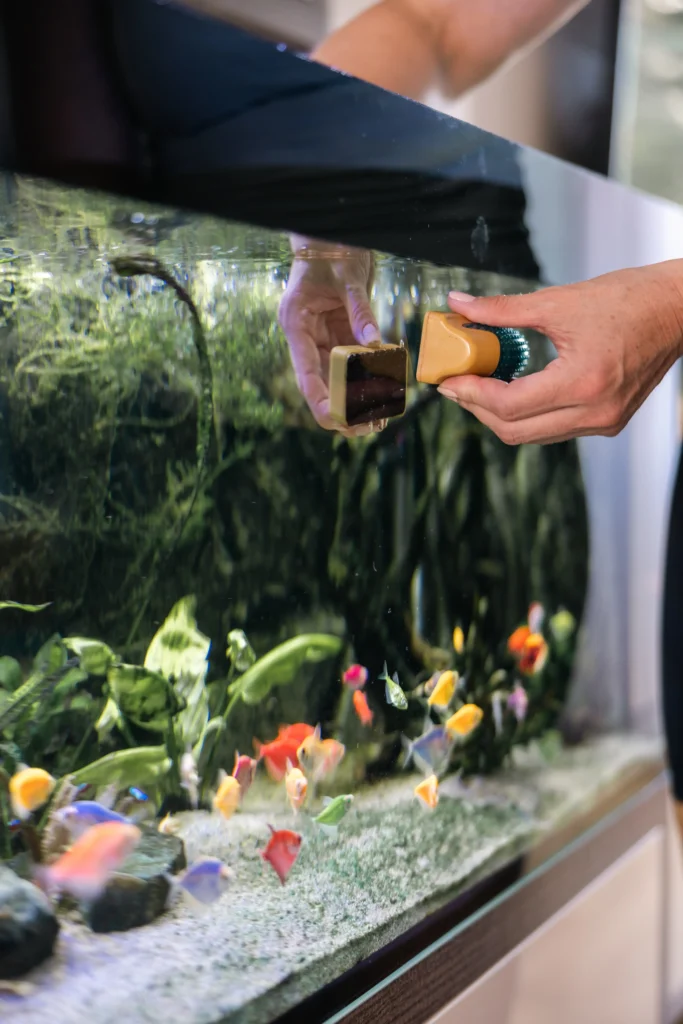

FAQs
Can I Use a Magnetic Cleaner on a New Tank?
Yes, magnetic cleaners are safe for new tanks, but clean the tank before first use to avoid trapped debris scratching the glass.
How Often Should I Clean My Tank with a Magnetic Cleaner?
Frequently cleaning is recommended for the axolotl tank because it will be hard to scrub off the stubborn algae from the tank walls later. Gently clean weekly or every few days to prevent excess algae growth.
Will A Magnetic Cleaner Disturb My Axolotl or Corals?
No, it won’t. But avoid harsh chemicals or bleaching agents when cleaning the algae. Magnetic cleaners cause minimal disturbance compared to manual scrubbing. Also, it is safe to use, and you can move slowly and avoid direct contact with the axolotl.
Are Magnetic Cleaners Safe for Acrylic Tanks?
Only if it label says “acrylic safe”. These materials can prevent scratching the delicate acrylic surface. Never use a magnetic cleaner designed for glass on acrylic tanks.
My Magnetic Cleaner Keeps Detaching. What’s Wrong?
If your magnetic cleaner keeps detaching, it is typically because the product is not strong enough for your tank thickness, or you are pressing it too hard. Verify that the magnet matches your tank’s specifications.
Can Magnetic Cleaners Remove Coralline Algae?
Yes, some specialized designs with sturdy blades can remove coralline algae if caught early. However, products with pads only are not effective against this type of algae.
Can I Use Dish Soap to Clean My Magnetic Cleaner?
No, only use plain, clean water to rinse your cleaner. Never introduce chemicals into the axolotl tank, as they have delicate, permeable, and sensitive skin (prone to infection).
Also Read:
The Axolotl Diaries
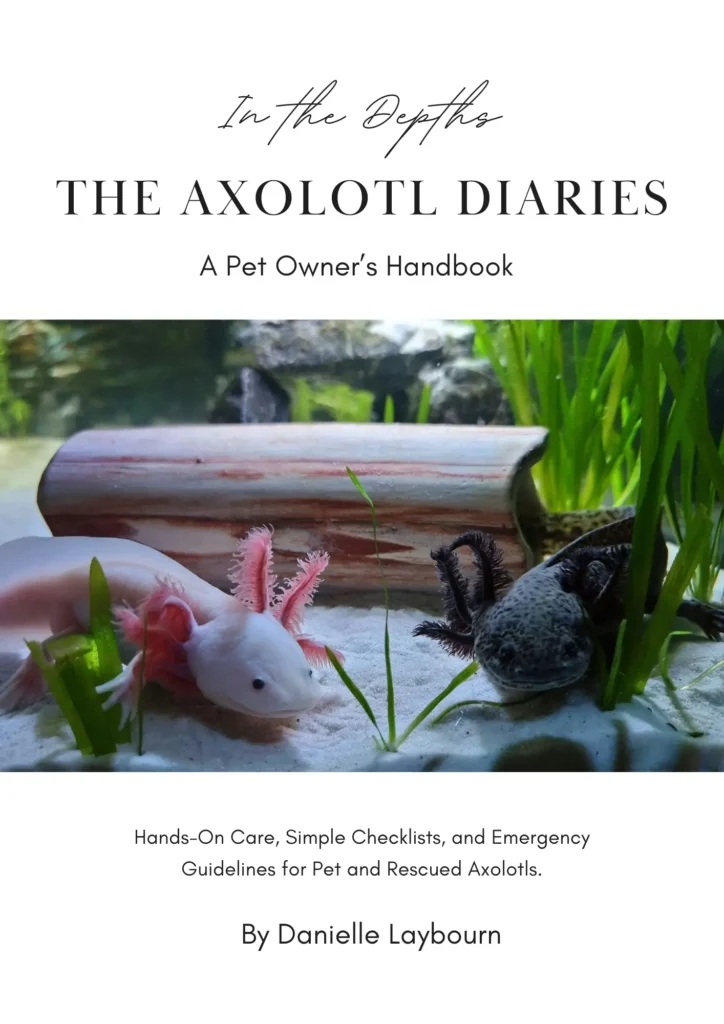
A clear, step-by-step handbook (50+ pages) about axolotl care that covers basics, safe tank requirements, cycling, feeding, common health issues, and more.
Rescue-informed and vet-aware. For anyone who wants to raise a healthy, happy axolotl.
Find everything in plain language, backed by real experience.
Grab printable cheatsheets, practical tips, and easy troubleshooting guide inside!
Price: $14.99
Summing Up
It may sound easy to use magnets and clean the tank walls simply. But trust me, it is not. It takes a lot of experience to find out what works best for you.
Select the right cleaner for your axolotl and avoid grabbing the first thing you see. Do your research first before buying.
Avoid the mistakes that I made, and you’ll have a sparkling clean tank without getting your hands wet!
Disclosure: This post contains affiliate links. As an Amazon Associate, I earn from qualifying purchases. It means that if you click on an Amazon link on this site and make a purchase, I may earn a small commission at no extra cost to you. Thank you for your support!

